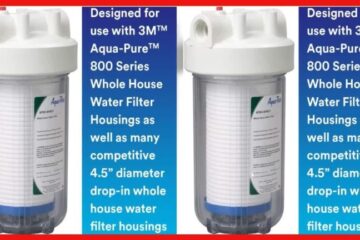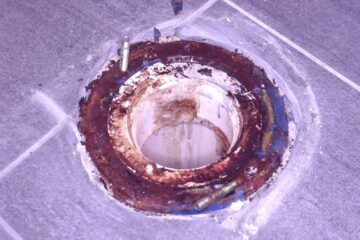Water pump horsepower is an essential factor to consider when determining the efficiency and effectiveness of a water pump system. Whether you are involved in agriculture, construction, or any other industry that requires pumping large volumes of water, knowing how to calculate the required horsepower is crucial for optimal operation. In this article, we will provide you with a simple guide to calculate water pump horsepower, along with a formula that can be easily applied to any pumping scenario. Understanding the horsepower requirements will not only help you select the right pump for your specific needs but also ensure the longevity and efficiency of your system.
Understanding Water Pump Horsepower
Definition of Water Pump Horsepower
Water pump horsepower refers to the measurement of power required by a water pump to effectively move water from one location to another. It is the unit of measurement that determines the capacity and performance of a water pump. Horsepower is a crucial factor in selecting the appropriate water pump for a specific application, as it indicates the power needed to overcome the resistance and provide the desired flow rate.
Importance of Calculating Water Pump Horsepower
Calculating water pump horsepower is essential for various reasons. Firstly, it ensures the efficient operation of the pump, preventing under or overworking of the motor. Secondly, it helps determine the appropriate size of the pump needed for a specific application, ensuring optimal performance and longevity. Lastly, understanding water pump horsepower allows for cost-effective operation, as using a pump with excessive horsepower can lead to unnecessary energy consumption and increased maintenance costs.
Factors Affecting Water Pump Horsepower
Several factors influence the calculation of water pump horsepower. These factors include the water pump efficiency, total dynamic head (TDH), and flow rate. Properly considering these factors ensures accurate calculations and facilitates the selection of an appropriate water pump for a specific application.
Gathering Required Information
Water Pump Efficiency
Water pump efficiency refers to the ratio of the output power to the input power, expressed as a percentage. It indicates how effectively the pump converts the supplied energy into the desired output. To calculate water pump horsepower, it is crucial to determine the efficiency rating of the water pump, as this information allows for accurate calculations and ensures the selection of an energy-efficient pump.
Total Dynamic Head (TDH)
Total dynamic head (TDH) represents the total energy required by the pump to move water against various resistances. It takes into account the vertical distance the water needs to be lifted, friction losses, and additional factors such as pipe length and fittings. Determining the TDH is a critical step in calculating water pump horsepower, as it provides insight into the amount of power required to overcome the resistance and achieve the desired flow rate.
Flow Rate
Flow rate refers to the volume of water that passes through the pump per unit of time. It is usually measured in gallons per minute (GPM) or liters per second (L/s). Accurately measuring the flow rate is crucial for calculating water pump horsepower, as it helps determine the capacity of the pump required to meet the desired flow rate for a specific application.
Calculating Water Pump Efficiency
Determining Efficiency Rating
To calculate water pump horsepower, it is necessary to determine the efficiency rating of the water pump. This rating can usually be found in the pump manufacturer’s documentation or specifications. The efficiency rating is expressed as a percentage (e.g., 80% or 0.8) and represents the ratio of output power to input power.
Gathering Input and Output Power Data
To calculate the efficiency percentage, you need to gather the input power and output power data. The input power can be obtained by referring to the motor nameplate or the pump specifications. It represents the power supplied to the motor or pump. The output power, on the other hand, can be determined by multiplying the flow rate (in GPM or L/s) by the head (in feet or meters) and the specific gravity of the liquid being pumped.
Calculating Efficiency Percentage
Once the input power and output power data are obtained, calculating the pump efficiency is a straightforward process. Divide the output power by the input power and multiply the result by 100 to obtain the efficiency percentage. This calculated efficiency percentage is then used in the subsequent calculations to determine the water pump horsepower accurately.
Determining Total Dynamic Head (TDH)
Understanding TDH
Total dynamic head (TDH) is the sum of all the resistances that the water pump must overcome to move water from one location to another. It includes the vertical distance the water needs to be lifted, the friction losses due to pipe length and fittings, and additional factors such as changes in elevation. Understanding TDH is crucial for accurately calculating water pump horsepower, as it provides a comprehensive view of the resistance and energy requirement.
Measuring Vertical Distance
To determine the vertical distance component of TDH, measure the elevation difference between the water source and the discharge point. This measurement is typically done using a leveling instrument or a measuring tape. Ensure that the measurement accounts for any changes in elevation, including the height at which the water pump will be located.
Measuring Friction Losses
Friction losses occur due to the resistance encountered as water flows through pipes, fittings, and other flow control elements. To determine the friction losses, it is necessary to consider the pipe length, pipe diameter, and the type of pipe material. These factors can be obtained from engineering specifications or by conducting flow tests on the system.
Including Additional Factors
In addition to vertical distance and friction losses, other factors such as changes in pipe elevation, fittings, and valves must be considered. These additional factors contribute to the overall resistance the pump needs to overcome and should be accounted for when calculating TDH. Refer to engineering specifications or consult with professionals to accurately determine the additional factors influencing TDH.
Measuring Flow Rate
Methods for Measuring Flow Rate
There are several methods available for measuring flow rate, depending on the specific application and available resources. Common methods include using flow meters, timing how long it takes to fill a known volume container, or conducting flow tests using calibrated equipment. The chosen method should be accurate and suitable for the specific system being analyzed.
Determining Units of Measurement
Before measuring the flow rate, it is crucial to determine the appropriate units of measurement. The standard units for flow rate are gallons per minute (GPM) or liters per second (L/s). Ensure consistency in the units used throughout the calculations to obtain accurate results.
Using Experimental Data or Specifications
If the flow rate data is not readily available, it may be necessary to conduct flow tests to measure the flow rate accurately. This can be done using flow meters, calibrated equipment, or by timing how long it takes to fill a known volume container. Alternatively, flow rate data may be obtained from engineering specifications or by consulting with professionals familiar with the specific system being analyzed.
Applying the Water Pump Horsepower Formula
Understanding the Formula
The formula for calculating water pump horsepower is as follows:
Water Pump Horsepower (HP) = (Head (ft) × Flow Rate (GPM)) / (3960 × Pump Efficiency)
This formula takes into account the head (the total energy requirement), the flow rate (the desired volume of water), and the efficiency of the water pump. Understanding and correctly applying this formula is crucial to accurately determine the required horsepower for a specific application.
Calculating the Water Pump Horsepower
To calculate the water pump horsepower, plug the values for the head (in feet), flow rate (in GPM), and efficiency (as a decimal) into the formula mentioned above. By performing the necessary calculations, you will obtain the required horsepower. Ensure that the units of measurement are consistent throughout the calculation to avoid errors in the final result.
Considering Safety Factors
When calculating water pump horsepower, it is essential to consider safety factors to account for any unforeseen fluctuations or changes in the system. It is recommended to add a safety margin of at least 10-20% to the calculated horsepower to ensure that the pump can handle any variations in the system conditions and continue to operate effectively.
Interpreting the Calculated Horsepower
Determining Pump Size
The calculated horsepower provides guidance in determining the appropriate pump size required for a specific application. Choose a pump with a horsepower rating that is equal to or slightly higher than the calculated value. Selecting a pump that meets the calculated horsepower ensures optimal performance, efficiency, and longevity.
Selecting the Right Motor
To match the water pump, it is crucial to select a motor that can provide the required horsepower. Ensure that the motor selected has a horsepower rating and operating parameters that align with the calculated water pump horsepower. By selecting the right motor, you can ensure efficient operation and prevent overworking or underworking of the pump.
Considering Efficiency and Real-World Conditions
While calculations help determine the required horsepower, it is important to consider real-world conditions and efficiency factors. Factors such as pipe length, pipe diameter, fittings, and changes in the system over time can impact the overall efficiency and performance. It is therefore important to regularly assess and maintain the system to optimize the efficiency and ensure the calculated horsepower remains appropriate for the application.
Practical Examples and Case Studies
Example 1: Residential Water Pump
Consider a residential water pump that needs to lift water from a well located 50 feet below ground level to a storage tank situated at ground level, with a desired flow rate of 10 GPM. Assuming a pump efficiency rating of 80%, the calculation would be as follows:
Water Pump Horsepower (HP) = (50 ft × 10 GPM) / (3960 × 0.8) = 0.158 HP
In this example, a residential water pump with a horsepower rating of approximately 0.16 HP would be suitable for the given conditions. It is important to note that this calculation does not account for safety factors, so it is necessary to add a safety margin to the calculated horsepower.
Example 2: Industrial Water Pump
In an industrial setting, the requirements for water pumps can be more demanding. Consider an industrial water pump that needs to overcome a total dynamic head of 100 feet and achieve a flow rate of 1000 GPM. Assuming a pump efficiency rating of 85%, the calculation would be as follows:
Water Pump Horsepower (HP) = (100 ft × 1000 GPM) / (3960 × 0.85) = 26.65 HP
In this example, an industrial water pump with a horsepower rating of approximately 26.7 HP would be suitable for the given requirements. Again, it is crucial to account for safety factors by adding a safety margin to the calculated horsepower.
Case Study: Agricultural Irrigation System
In an agricultural irrigation system, water pumps are used to transport water from a water source to irrigate crops. To properly size the water pump for this application, factors such as the total dynamic head (including elevation changes and friction losses), flow rate, and the efficiency of the pump must be considered. Additionally, factors specific to the irrigation system, such as the type of crops, irrigation method, and required watering schedule, should be taken into account.
By accurately calculating the water pump horsepower and selecting the appropriate pump and motor, the agricultural irrigation system can be efficiently and effectively operated, ensuring optimal crop growth and minimizing water resource usage.
Common Challenges and Troubleshooting
Inaccurate Data Inputs
One common challenge in calculating water pump horsepower is inaccurate data inputs. Ensure that all measurements and data used in the calculations are precise and reliable. Any errors or inconsistencies in the input data can lead to inaccurate results and potentially selecting an insufficient or oversized water pump.
Unpredicted System Changes
Another challenge is unforeseen changes in the system. Over time, the system conditions may change due to factors such as pipe corrosion, clogging, or changes in elevation. It is essential to regularly evaluate the system and update the calculations as necessary to ensure the water pump horsepower remains suitable for the current system conditions.
Insufficient or Excessive Horsepower
Selecting the wrong horsepower for a water pump can lead to various issues. If the horsepower is insufficient, the pump may not be able to overcome the resistance and provide the desired flow rate. On the other hand, selecting excessive horsepower can lead to unnecessary energy consumption and increased maintenance costs. It is crucial to accurately calculate the water pump horsepower to ensure optimal performance and efficiency.
Maintenance and Repair Issues
Regular maintenance and timely repairs are essential for the efficient and reliable operation of water pumps. Neglecting maintenance or failing to address repair issues promptly can result in reduced pump performance, increased energy consumption, and potential system failures. It is important to schedule routine maintenance and address any repair issues to maximize the lifespan and performance of the water pump.
Calculating water pump horsepower is a crucial step in selecting the appropriate water pump for a specific application. By understanding the various factors that influence the calculation, such as water pump efficiency, total dynamic head, and flow rate, accurate horsepower requirements can be determined. By following the outlined process, including gathering required information, applying the water pump horsepower formula, and interpreting the calculated horsepower, the right water pump can be selected, ensuring optimal performance, efficiency, and longevity. Additionally, being aware of common challenges and troubleshooting measures helps address any issues that may arise during the calculation or operation of the water pump system.



